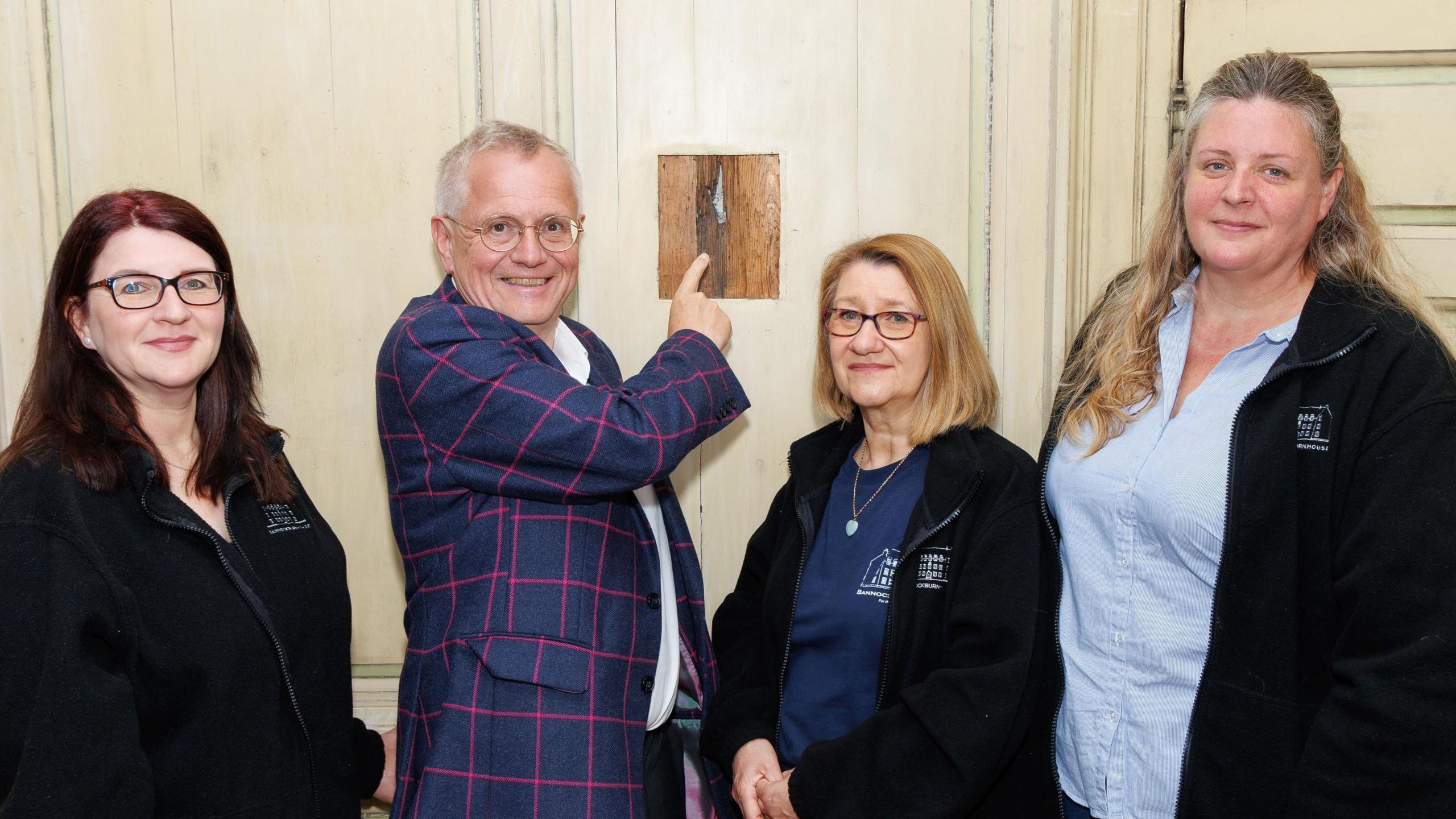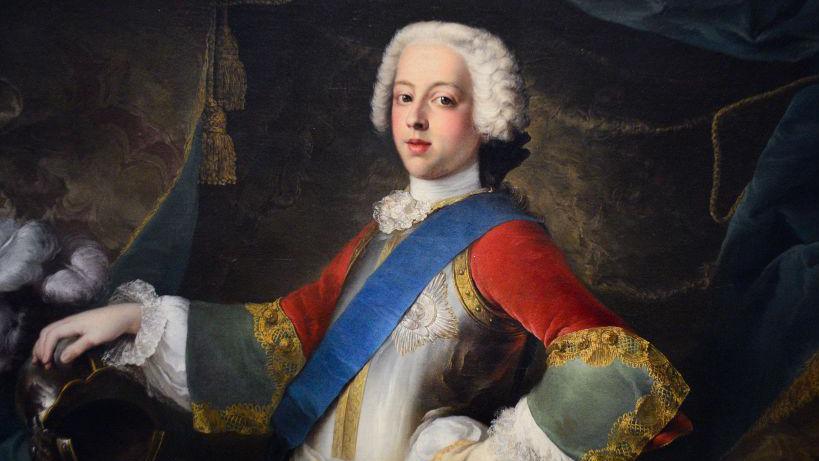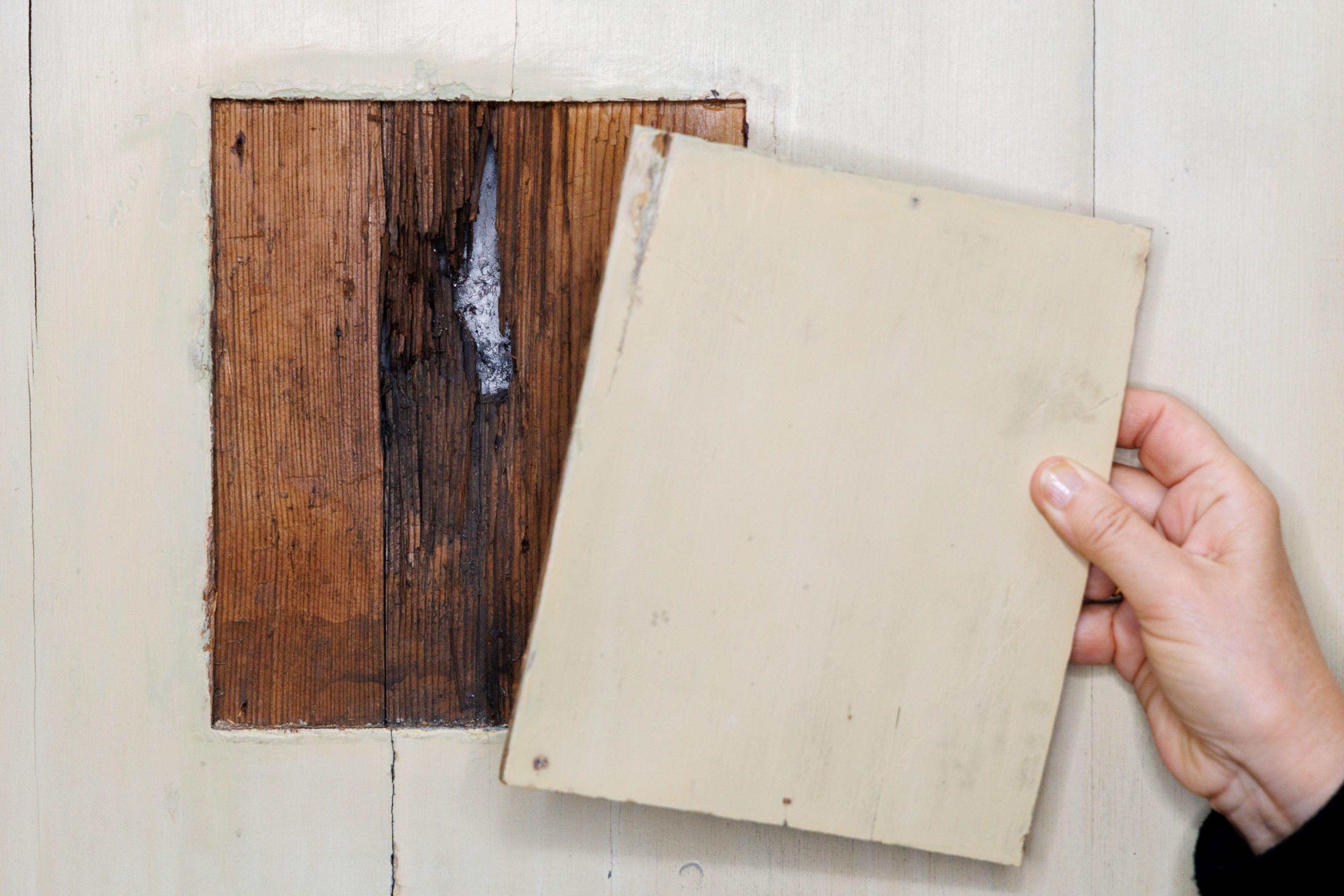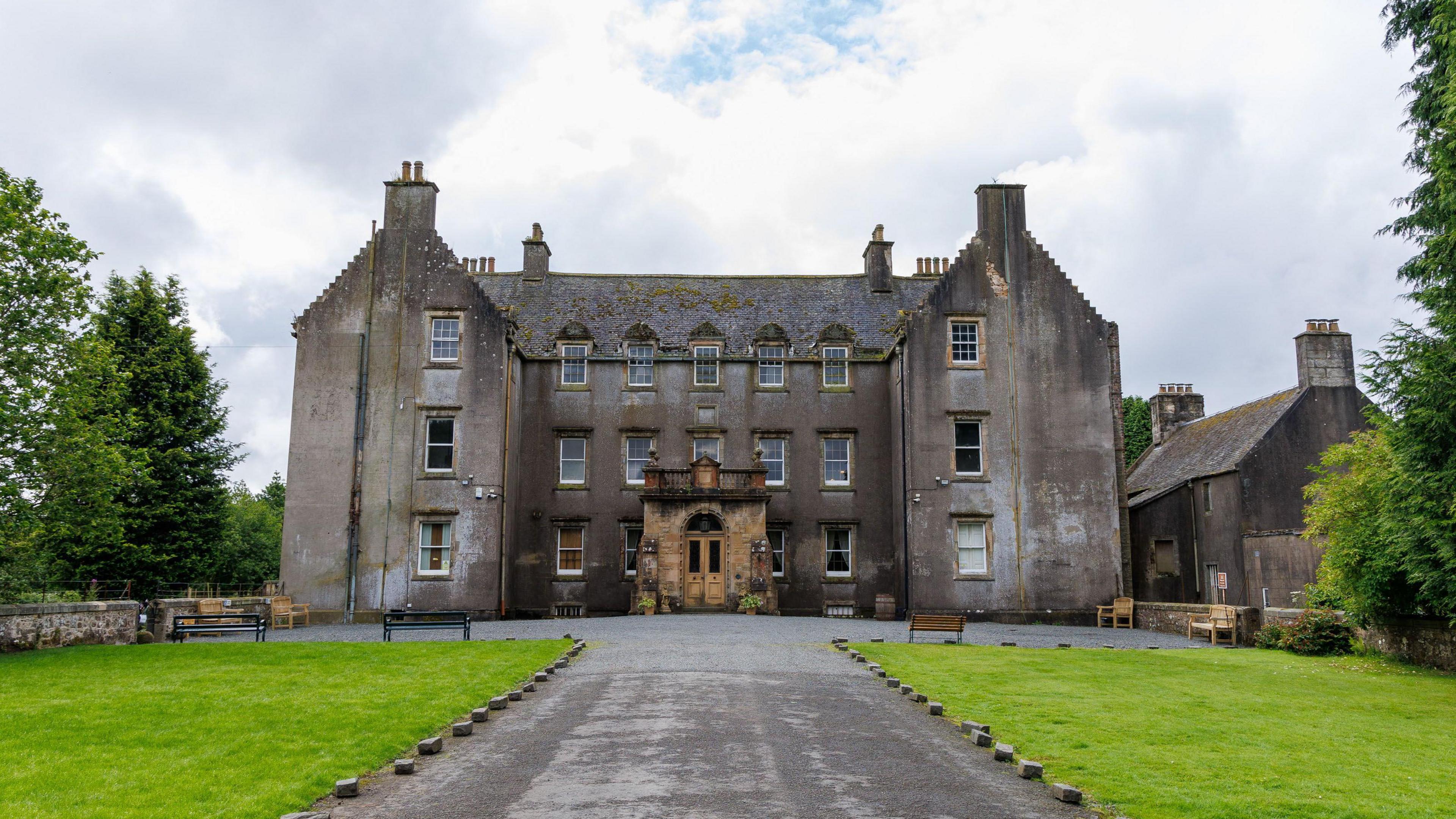Is bullet hole proof of Bonnie Prince Charlie assassination attempt?

Amanda Monaghan, Prof Murray Pittock, Anne Monaghan and Catherine Bradley with the newly discovered hole
- Published
Historians have discovered a bullet hole at a Grade A listed house near Stirling, which they believe is proof of an assassination attempt against Bonnie Prince Charlie.
Prince Charles Edward Stuart took shelter at Bannockburn House in 1746, and it has been said that a shot was fired through the window of the room he was sleeping in.
Now volunteer researchers have discovered a musketball hole hidden amidst plaster work and wooden panelling.
This remarkable discovery has been announced to coincide with the 279th anniversary of Bonnie Prince Charlie’s arrival on Scottish soil.

A portrait of Bonnie Prince Charlie painted by Louis Gabriel Blanchet - on display at the National Portrait Gallery in London
Bonnie Prince Charlie was the grandson of King James II of England, who was also King James VII of Scotland.
He played a significant role in the 1745 Jacobite rising, which effectively ended after his defeat at The Battle of Culloden in April 1746.
In January 1746, he fell ill and was taken to Bannockburn House to recuperate.
He stayed in a large bedroom on the first floor’s west wing, which features a delicate plaster frieze of mermaids and multiple layers of ancient wooden panelling.
In April this year, the musket ball hole was found behind a secret panel by volunteer researchers from the House’s History Team.
A musket ball is a type of ammunition used in muskets, which are long-barrelled, muzzle-loaded firearms that were commonly used from the 16th to the 19th centuries.

The bullet hole was found behind panelling at Bannockburn House
Volunteers had unsuccessfully searched for the hole until David Jenkinson whose aunt was the housekeeper for the last owner in residence, provided the crucial lead.
Mr Jenkinson told BBC Scotland News that he remembers being "intrigued" when his aunt Margaret Harley showed him the hole, but she disputed who the shot was aimed at.
He said: "It was quite unusual. Someone had fired it about a third of the way up the wall.
"She was sure it wasn’t Bonnie Prince Charlie, she was adamant about that. Other people spread that story about but she said it was too modern."
X-rays reveal lost image of Bonnie Prince Charlie
- Published28 July 2023
Bonnie Prince Charlie's sword to go on display
- Published23 October 2023
Bonnie Prince Charlie hideout on Skye up for sale
- Published8 March 2024
The room was re-examined after David's input, and an inset panel suspected of hiding the hole was discovered.
Catherine Bradley, History Team Lead at Bannockburn House, recounted the moment of discovery.
She said: “It was an exciting moment when I carefully lifted the panel and saw the splintered wood. I knew we had found something very special.”
The find was then authenticated by Jacobite historian Professor Murray Pittock, of the University of Glasgow, and Stirling Council archaeologist Dr Murray Cook.
Dr Cook said “To see the damage and to touch the spot sent a thrill down my spine - an incredible, tangible experience and worth visiting Bannockburn House for this alone.”

Bonnie Prince Charlie stayed at Bannockburn House in the 1740s
The Prince was hosted by Sir Hugh Paterson, 3rd Baronet of Bannockburn, while the Jacobite army besieged Stirling Castle.
During his stay, Prince Charles met Sir Hugh’s niece, Clementina Walkinshaw, who nursed him back to health.
Their romance continued for many years after the rising, and the pair had a daughter, Charlotte, Duchess of Albany.
Prof Pittock, author of Culloden and The Myth of the Jacobite Clans, added: “I am pleased to endorse that Bannockburn House Trust has almost certainly discovered forensic evidence of an assassination attempt on Prince Charles in 1746.
"This is critically important not only for our understanding of the rising but also for the role the attack may have played in intensifying the relationship between Charles and Clementina Walkinshaw, which led to the birth of his only child.”